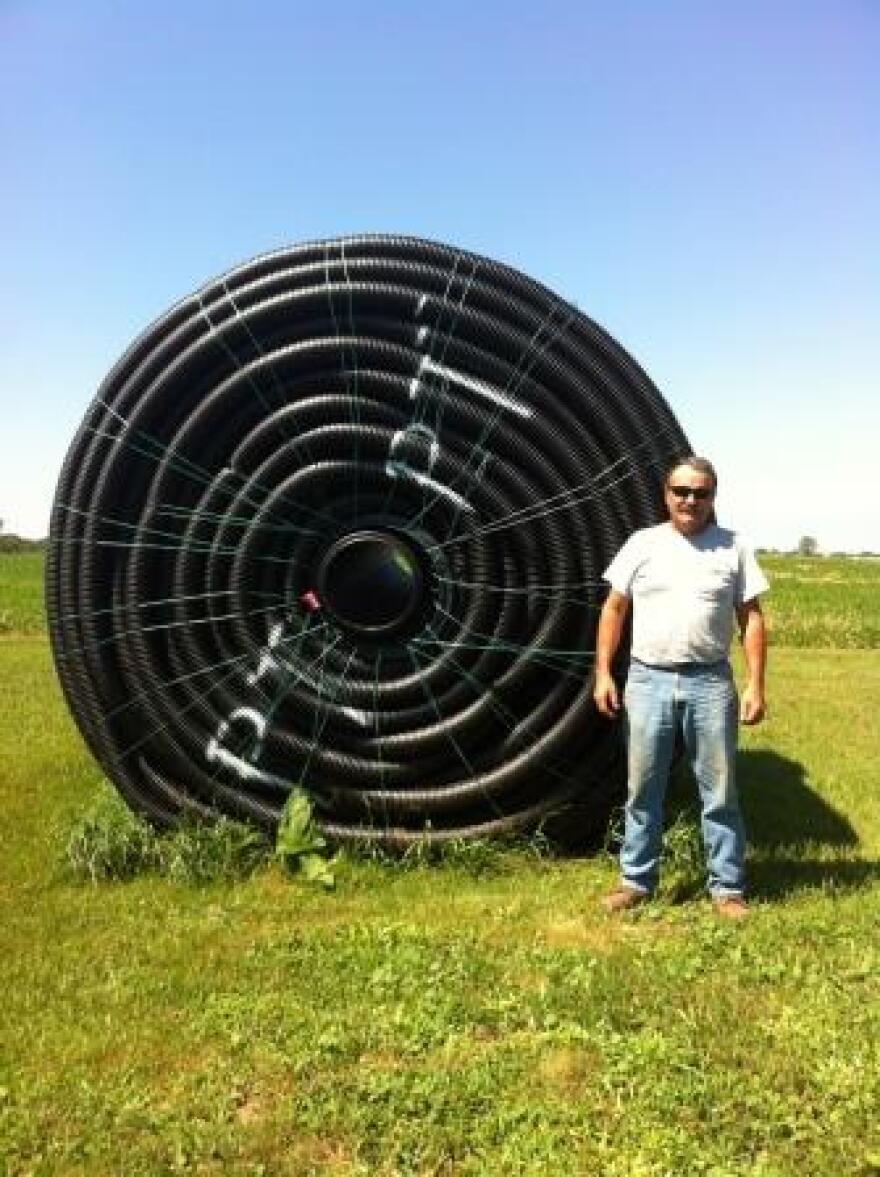Farmers in the Champlain Valley often use tile drains in their fields. They help the region’s clay soil drain faster and produce higher crop yields.
But for years, Lake Champlain has had high levels of phosphorus pollution, which can result in toxic blue-green algae blooms. And farm runoff is one of the primary contributors.
Now scientists are trying to figure out whether there’s a link between tile drainage and phosphorus pollution.
Guy Palardy is a farmer in Alburgh, Vermont. He grows corn and soybeans, but he also makes his living installing tile drains in other farmer’s fields.
Tile drains are basically a system of slotted pipes. They go about four feet under the ground, beneath crops. Water collects in them and flows out to the nearest ditch.
Or, as Palardy puts it:
“All you’re doing is simply removing some of the water and allowing air to go into it.”
Palardy says that tile drains have clear advantages for farmers.
“In making air more available and water less of a problem, you increase the yield, the spring work is more timely cause you don’t have to wait for the gorund to dry out, and in a year like this year, " he says.
We climb into Palardy’s truck and drive to his neighbor’s farm. Palardy installed some drainage here. And you can see that corn grows higher and taller right along the diagonal lines where the tile drains are.
“I spaced them out because they didn’t want me to do a complete system. They said oh, we’ll just put a tile here and there because it’s not that wet. Well, that’s the only corn that’s tall and green, is where I put a tile.”
But because they provide a direct conduit for soil, and nutrients like phosphorus, into a waterway, tile drains are controversial. Those ditches that the water drains into – they usually go to a stream, then a river, then Lake Champlain.
“A hot topic on both sides of the lake is tile drainage.”
That’s Eric Young. He’s an agronomist at the Miner Institute in Chazy, New York. Young’s trying to figure out whether tile drains contribute to phosphorus loading in Lake Champlain– and if so, what to do about it.
“Farm fields aren’t 100 percent leak-proof. Any time we’re tilling the soil, and applying nutrients, manure, and trying to grow a crop, some small amount of sediment losses is inevitable. Does the presence of tile drain – does that increase the total amount of phosphorus loss from a given field or or does it decrease it?”
You’d think it would be simple.
In order to answer the question, Young is draining eight fields. Four of them just use regular tile drains. And in the other four:
“We have these control structures that go into the tile and we can put in these six inch weir plates and they act like a dam and that slows the rate of water movement out of the fields so what ends up happening is you get less water coming off these fields where we’re holding the water back and that results in less nutrient loss.”
But it gets a little more complicated. In a regular field without tile drains, there’s more surface runoff. Eric Howe is with the Lake Champlain Basin Program.
“That runoff would have sediment or mud or whatever in it and most of the phosphorus would be attached to the particles in the surface runoff. Which basically means that phosphorus is not immediately useable by algae.”
In the case of tile drains, there’s less surface runoff. But the phosphorus that makes it into the waterway through the drains can directly fuel algae blooms.
It’s not clear which is better or worse.
Farmer and tile installer Guy Palardy says that this summer’s rain made him think about it.
“When I see the rivers in these heavy rains flowing heavy rains and you know that’s all erosion from the surface where there’s the most phosphorus, what little would be going through the tile after filtering through 3, 4, feet of soil, I think it’s a very small fraction of what would erode from the top of the soil had it not been drained.”
Eric Howe from the Basin Program says that climate change means more rain – and more runoff.
“Precipitation will be increasing over the next 50 years or so which makes things like tile drains all the more important for ag producers and for water quality managers.”
For now, scientists are working to get answers.
This fall, the Lake Champlain Basin Program hopes to get enough money to do a thorough review of all the research on tile-drained fields.
Eric Young’s experiment at the Miner Institute fields will continue through 2014.






